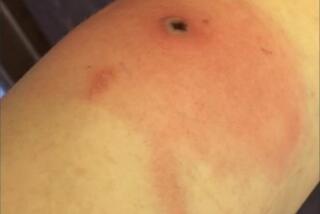Report on Eskimos : Study Rejects Radiation as Cancer Agent
- Share via
ANCHORAGE, Alaska — Cancer is on the rise among Alaska natives, but a recent study dismisses radiation from nuclear tests during the 1950s and early 1960s as a cause.
The study, by the national Centers for Disease Control, examined the hypothesis that North Slope Eskimos’ dependence on caribou meat made them ingest high doses of fallout radiation absorbed by lichen, the caribou’s prime winter food.
The report, however, found that maximum radiation doses among Eskimos were comparable to the natural background radiation in some regions of the United States.
The two-part report appears in the last two issues of Alaska Medicine, the quarterly journal of the Alaska State Medical Assn. One of the report’s three authors is Dr. Anne P. Lanier, at the Atlanta-based center’s Arctic Investigation Laboratory in Anchorage.
Prompted by Concern
She said that the study was prompted by natives’ concern about increasing cancer.
“There are definitely more cancer cases diagnosed among the native population now than there have been in the past,” she said. “But there is a variety of explanations.”
The increase may be due to the increasing Eskimo population, or because more Eskimos are living longer and reaching ages more prone to cancer, she said.
“The most dramatic increases we’re seeing are largely in lung cancer. We feel that’s related to the increase in the amount of smoking,” Lanier said.
The CDC study compared cancer cases in several Arctic villages with radiation measurements made from 1962 to 1967 on lichens, caribou and people.
1960s Peak
The early 1960s were the peak of atmospheric nuclear testing by the United States, the Soviet Union and other countries. Most testing went underground after the Limited Test Ban Treaty in 1963.
Lichens, which have efficient mechanisms for conserving nutrients in the barren Arctic, also efficiently absorb and retain radioactive particles, the study said. That radiation is passed to feeding caribou and then to humans in the food chain that culminates in the Eskimo subsistence hunter.
Researchers found that in villages where dependence on caribou meat was greatest, so were radiation levels in villagers. The highest levels were found in Anaktuvuk Pass, a village in the Brooks Range.
However, the report said: “The people of Anaktuvuk Pass did not develop significantly more cancers than those of other villages when size of village is taken into consideration.”
More to Read
Sign up for Essential California
The most important California stories and recommendations in your inbox every morning.
You may occasionally receive promotional content from the Los Angeles Times.












